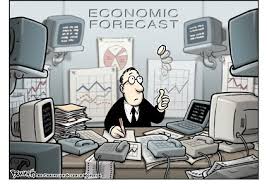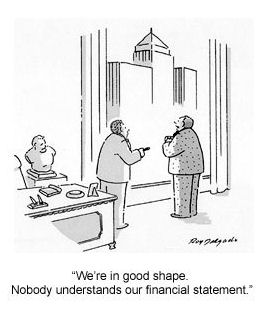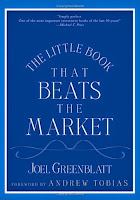 When I was a child, I am always excited when my parents open the letter box, only to be disappointed that none of the letters belonged to me. Once in a while, my cousins and I exchanged seasonal greeting cards and receiving letters was fun.
When I was a child, I am always excited when my parents open the letter box, only to be disappointed that none of the letters belonged to me. Once in a while, my cousins and I exchanged seasonal greeting cards and receiving letters was fun.Nowadays, with advancement of technologies, shopping online is made possible. I have made several purchases that were delivered into my mailbox. Although the hype of receiving stuff in the mailbox has died down pretty much, I still find it cool to be receiving items other than letters through post.
 Recently on 28 October 2015, Singapore Post announced that they will transform the concourse in front of their Singapore Post Center at Paya Lebar into a 5 storey, 25,000 sqm retail mall that will be completed by mid 2017. What is so special about this mall is that shoppers who bought from the retailer can have their purchases delivered to their homes.
Recently on 28 October 2015, Singapore Post announced that they will transform the concourse in front of their Singapore Post Center at Paya Lebar into a 5 storey, 25,000 sqm retail mall that will be completed by mid 2017. What is so special about this mall is that shoppers who bought from the retailer can have their purchases delivered to their homes.While this is an exciting development for a lazy shopper like myself, I do have a few bones to pick with the postage service in Singapore.
No doubt, one can arguably agree that the postage service in Singapore is world class. But with the development of technology, I am sure it is about time we see some upgrades to how mails are delivered.
For those who are not familiar with what SingPost has to offer, you can visit their website to have a look: https://www.singpost.com/.
BONES TO PICK
I would like to touch on the plain old delivery of letters. It is not uncommon to find letters that belong to a neighbour in your letter box. If I am in a good mood, I will personally go their front door and leave the wrongly delivered letter there. Otherwise, I'll just chuck it somewhere at the letter box area for all to see.
If I am receiving letters delivered to the wrong address, it brings to mind the possibility that MY letters could have fallen into the wrong hands as well. What if that letter contains important or extremely sensitive information and the person who got it did not have the integrity to return it? Or it is an actionable item that has dire consequences if ignored?
I am not criticising the postman for making mistakes time to time. I understand that it is human nature to make mistakes some times. What I am going to propose is a possible fix with the help of technology.
 Another issue that I have a problem with is the delivery timing of tracked parcels. The most plausible reason why one would opt for parcels to be delivered to the doorstep instead of those self-retrieval boxes is because one does not have the time to go and pick up the items at a specific location. However, the delivery date of the tracked parcels is usually unknown, making it difficult to anticipate when one would need to have someone at home to receive the parcel.
Another issue that I have a problem with is the delivery timing of tracked parcels. The most plausible reason why one would opt for parcels to be delivered to the doorstep instead of those self-retrieval boxes is because one does not have the time to go and pick up the items at a specific location. However, the delivery date of the tracked parcels is usually unknown, making it difficult to anticipate when one would need to have someone at home to receive the parcel.Then comes the problem of delivery timing, which is on weekdays and during working hours, which contradicted the very reason why someone needs an item to be delivered to the doorstep. If the recipient is so free to be at home the entire time waiting for the parcel, why would the service still be required? The end result is a slip of a paper asking the recipient to collect it at the nearest post office. What was the point of paying for the service if I have to collect it myself again?
THE FIX
The solution I am going to propose will not only increases the accuracy with which letters can be retrieved, it can revolutionise the way how our posts are delivered, opening up more possibilities with improved convenience. This solution also changes the role of postman, which will resolve manpower issues and make their job a whole lot easier.
Instead of having one letter box to each household, which limits the size of the mail box and takes up too much dead space. A new-age mailbox can allow automatic retrieval of postage without requiring the post man to sort and deliver. The entire delivery process is mechanised and the sorting is done by a machine via scanning of barcodes/QR codes.
All that the postman needs to do is to deliver a automation-enabled container full of items to be delivered, plug it into the new-age mailbox located at every void deck, key in some verification code and ensure that the system recognises the container, retrieve the container from the day before, and be on his way. The returned container can contain items that users wish to deliver, eliminating the need for letterboxes around the island that their sole purpose is to collect lett
ers to be posted. Sending and receiving postage can be done at the void deck!
The new-age mailbox will then do its sorting internally and scans the barcode on every item to get an inventory of the items delivered. The scanned items can be feedback to headquarters for tracking purposes to confirm that items' status and location. This method of tracking can allow all users to purchase information on the location of their items without actually opting for tracking services before delivery.
Everyone who wants to retrieve their posts need to register for an account. Each account will need to maintain a balance for deduction of postage fees. Postage fees can now be transferred from the sender to the receiver where applicable and additional costs can be charged for any special services incurred.
 Imagine a counter at your void deck with maybe 3 mailboxes that looks like microwave ovens. The user punches in a verification code or taps a key card at any of the mailboxes and the system does a search for the user's items. If there are items for the user, the system will transfer the item from its storage into the mailbox where the user can retrieve it.
Imagine a counter at your void deck with maybe 3 mailboxes that looks like microwave ovens. The user punches in a verification code or taps a key card at any of the mailboxes and the system does a search for the user's items. If there are items for the user, the system will transfer the item from its storage into the mailbox where the user can retrieve it.With the new-age mailbox, the size of the mailbox is no longer limited to the cumulative space needed for all the household. The bulk of space needed will be for holding the inventories in the storage. Users can now have bigger items delivered to their void decks with the assurance that it is accurately delivered and if need be, track the delivery status online.
One other possibility of the new-age mailbox is for users to purchase daily non-perishables necessities. The storage can hold items such as batteries, bandages, adhesive tapes, etc for emergency uses. E-commerce would be upgraded and merchants who wish to advertise can forget about flyers and go through the media player on the mailbox to broadcast their advertisement to users while they wait for their items to be retrieved. This will become a new targeted advertising since the profile of the user is tagged to the account and is known to the system.
DOWNSIDE?
The one biggest downside of course would be the development and implementation costs. But think about this, 20 years ago, elevators serving residents of HDB only stops at 3, at most 4 levels. Today, they stop at EVERY level! Was it costly to implement? Yes! But was it necessary to improve lives? YES! So cost should not be an inhibiting factor to improving the lives of the people.
Moreover, the possibilities that this new-age mailbox opens up is a multitude of new revenue generating segments that pays for the development itself!
All users can start selling items from their homes, increasing postage revenue, or allowing SingPost to draw a commission for the items purchased through the mailbox. The minimum balance that every account needs to have will become free float for SingPost to earn additional returns and perhaps enter into the insurance business. Each mailbox becomes a remote commercial retail center and shoppers can truly conduct a hybrid of physical and online shopping with the peace of mind! Imagine the possibilities.
Cost cutting can be execute with exponential improvement to speed and accuracy of delivery.
The only way forward, is to advance technologically.
Do let me know of your thoughts on my idea, whether you think it is feasible or whether you agree with its possibilities in the comments section.






















